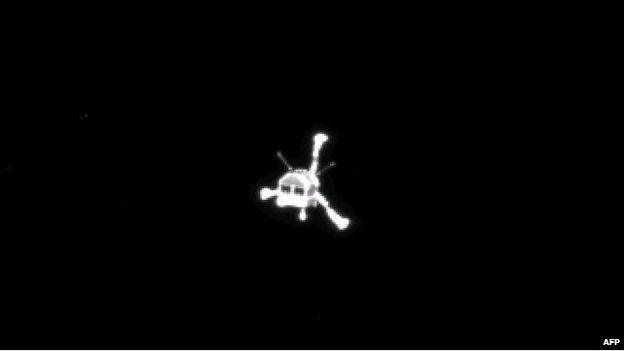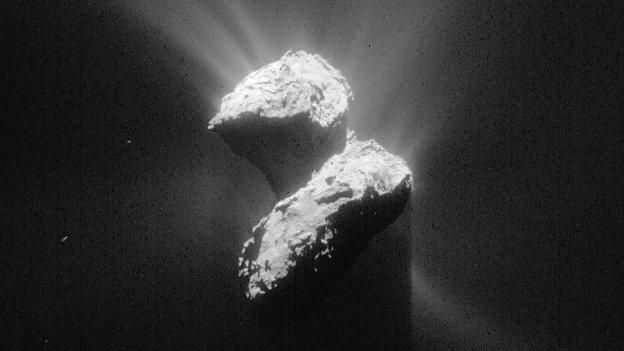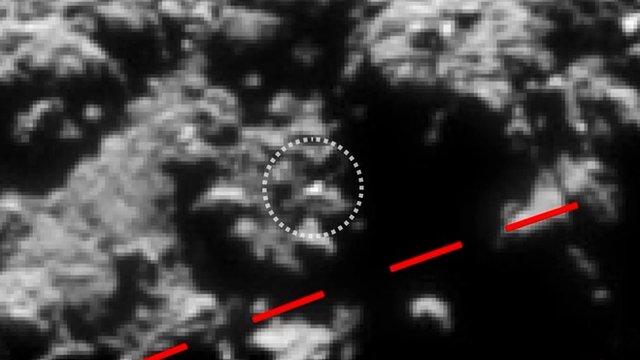Philae awakening provides extraordinary opportunity
- Published

The Philae lander after separation captured by Rosettas OSIRIS narrow-angle camera
The astonishing survival of the comet lander Philae means we have a unique opportunity to witness something previous generations could only dream of.
The tiny spacecraft, nestling in a dark corner of the comet's rugged surface, will have a ringside seat as this alien world approaches the Sun and starts to generate its tail.
Never before in the history of exploration has anything like this been remotely possible and the potential for discovery is extraordinary.
The official line had always been that the device had every chance of remaining alive, but privately few people had been quite so bold.
But not only has Philae survived, it's come back to life at the best possible moment.
The original plan was for Philae to land and use its instruments to study the comet before it became too active - the fear was that emerging jets of gas may make the place too unstable or even dangerous.
But what seemed to be incredible bad luck as the lander bounced away from its intended landing site last November may prove to open up a treasure-trove of new information.
Spectacular process
The unexpected hibernation since last November - and the fact that the spacecraft is tucked safely beneath a cliff - mean it is poised to witness what could be a spectacular process at its most interesting time.
That's because the spacecraft is hitch-hiking just as the comet's orbit brings it nearer the Sun with a predicted closest approach during August.
If it continues, it will be able to gather information about what's inside the comet as the gas jets grow and accelerate, and possibly even take pictures as parts of the surface break apart to form the tail.
One possibility is that the strangely shaped comet, which may be formed of two distinct bodies, will split in two as the Sun's rays intensify.
Imagine what images of that would be like.
Esa scientist Mark McCaughrean: "The comet is at a much more active phase than in November"
In the 60 hours after its dramatic touchdown last November, Philae managed to carry out an initial batch of experiments before its batteries died.
A lot remains to be discovered.
Already we have found out that the water inside the comet, locked away as ice, does not have the same chemical signature as water here - so this type of comet cannot have brought water to the early Earth, though other types may have done.
But another theory is that comets delivered the building-blocks for life - the carbon molecules without which nothing could have got started here - and now we have an unprecedented chance to investigate that.
So this has become one of the most exhilarating opportunities for space exploration.
Bold ambitions
But Philae's reawakening represents more than that.
It is a remarkable story of brilliant engineering in which clever design combined with bold ambitions.
Across Europe, in labs and companies, clean rooms and workshops, there are people who had a hand in dreaming up and building Philae, and waited 10 years for it to reach its destination, and then seven months for it to wake up.
No wonder emotions are running so high.
Professor Monica Grady, of the Open University, which designed and built the ptolemy instrument on Philae, was so excited at the landing last November that she gave me my first on-air hug.
Today when she heard the news, she was in a taxi and hugged the driver instead.
- Published14 June 2015

- Published14 June 2015
- Published14 June 2015

- Published11 June 2015

- Published15 November 2014
- Published30 January 2015
